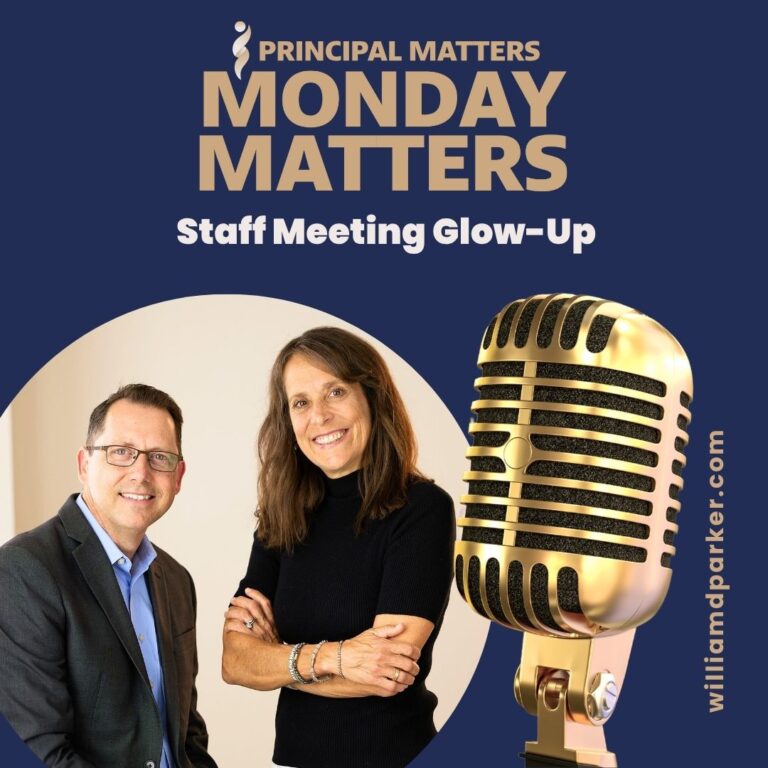Podcast: Play in new window | Download
When I spotted the mud puddle, I thought it would be fun to jump it.

The dirt road that ran along the edge of the field by our West Tennessee farmhouse was often traveled by trucks or tractors. And the ruts in the sandy, red dirt would fill with rain and create long stretches of rust-colored puddles. I was barefoot and seven years old. My brothers and sister were with me.
“Watch this,” I said. And I ran and jumped.
My feet landed in the thick mud and streaks of red clay splattered across my legs and shorts. They laughed. And soon, one by one, each of them tried it too.
“I think you could paint with this mud,” my sister said.
“Oh, yeah? I bet it would look good painted on you!”
And the mud battle began. Fists full of Tennessee red clay were thrown and splattered.
And we chased one another until my oldest brother said, “You know, in ancient times, people would bathe in mud as a way to treat their skin.”
He slowly began smearing it on his arms, his neck, his face, his legs. We followed suit. And before long, we were covered from head to toes in the red earth.
How Play Encourages Innovation
I was thinking back to this moment after reading the first two chapters of Tony Wagner’s Creating Innovators: The Making of Young People Who Will Change the World. Wagner makes a persuasive argument that without creativity, people lack the ideas, initiative, and motivation for extraordinary achievements.
In the book, he looks at the lives of some the most successful people in industry, science, or the arts — people who seem to possess qualities that motivate them to do extraordinary things for rewards greater than pay or recognition. These are people who are motivated by the wonder and joy of learning. In all the attributes Wagner identifies among these most creative and innovative minds, one trait stands out among them: play.
Play Influences Student Learning
Play isn’t just good for our mental health. It also provides contexts that encourage creativity, teamwork, and a sense of accomplishment. And it’s not just something that motivates small children. People of all ages find motivation by engaging in play. Take this description of the long-standing tradition of pranks at MIT that Tony Wagner explains:
”Joost Bonsen, who is an alumnus of the Massachusetts Institute of Technology and currently serves as a lecturer in the world-famous MIT Media Lab, talked about the importance of the famous tradition of pranks at the university.
‘Being innovative is central to being human.’ Bonsen told me. ‘We’re curious and playful animals, until it’s pounded out of us. Look at the tradition of pranks here at MIT. What did it take to put a police car on a dome that was fifteen stories high [one of most famous MIT student pranks], with a locked trapdoor being the only access? It was an incredible engineering feat. To pull that off was a systems problem, and it took tremendous leadership and teamwork.
‘Pranks reinforce the cultural ethos of creative joy.’ Joost added. ‘Getting something done in a short period of time with no budget, and challenging circumstances. It’s glorious and epic. They didn’t ask for permission. Not even forgiveness.’
[Wagner concludes:] These students were playing — just doing something for the fun of it. Play, then, is part of our human nature and an intrinsic motivation” (Creating Innovators).
Why are we not playing more?
You would think that play is something all children enjoy, but in a world that prizes protection and safety, many of our kids are missing out on the freedom and space they need to experience play. They are also experiencing increased stress and anxiety. In Tim Elmore’s ebook Help Teens Manage Stress & Anxiety, he discusses how these trends are playing out in surveys with college students:
Elmore shares the results of a report from the American College Health Association, which gives these sobering statistics about university students:
● 94% said the top word they use to describe their life is ‘overwhelmed.’
● 44% said it was difficult to even function.
● Nearly one in ten had thought about suicide in the last year.
When Elmore offers a number of responses to the growing anxiety among youth, guess what was one his many suggestions? Play.
Elmore adds,
”Even technology wizards—perhaps especially tech wizards—know the secret of living well is to get off a screen for the better part of a day. Play. Go outside. Be with people face to face. Talk. Listen. Run. Walk. Tumble. Skin your knee.”(Elmore, page 36)
Teachers of Innovation
If our schools are to be places that allow for creativity, innovation and exploration, then how do we encourage elements of discovery, competition and wonder? Don Wettrick is an educator who authentically engage students in active innovation. He is also a podcaster, presenter and innovator in his own projects. And his Started Up Innovation website is chock-full of interviews, ideas, and products that help teachers and students practice innovation, entrepreneurship, and technology-rich learning experiences.
Don is not alone. He is part of a growing number of educators who coach students in projects where they develop real-life scenarios for solving problems or creating products. They connect students with top innovators and business leaders through virtual meet-ups. And then they provide students with the direction, access, resources and collaboration for turning their ideas into tools, websites, businesses or movements. You may be aware of other innovative approaches like this with schools using Genius Hours, STEM labs, and Makerspaces that involve real-life application.
Play in Your Leadership
As a classroom teacher, I enjoyed learning. When my Language Arts students read plays or short stories, I read along with them — often I took parts as well so using bad British accents or a deep Southern drawl. But we also wrote our own stories. And as we did, we learned together, shared them with one another, and celebrate the moments. If I was in the classroom today, I would also encourage publishing through podcasts, blogs or Youtube channels.
When I became a school administrator, for the first few years, I felt the creativity inside of me dying. I was so overwhelmed with school management, I was quickly losing the joy in my work. But over time, I began to rediscover the joys of school: engaging with students and teachers while they learned, including them in building communications from our school, asking them for feedback on ways we could improve.
Slowly, I began to find ways to embed “playing” as a part of leadership. Creativity is a mindset, and you can be intentional with embedding play into your practices.
7 Ways for Ed Leaders to keep a playful mindset
Here are seven quick suggestions for keeping a mindset of playfulness:
1. Turn problem solving into puzzle solving.
Don’t look at every problem as a distraction from work that needs to be done. Look at solving challenges as finding better ways to enjoy learning. Every day you face situations where others ask for your input, or you encounter scenarios you’ve never had to manage before. As you do, you can learn to find energy and joy in collaborating with others for innovative solutions.
Last year, for instance, when we decided to implement a new remediation schedule, I knew I could not pull the task off by myself. We solicited input from a team of teacher advisors, and my admin assistants took the lead with this group. They created sample schedules that we beta-tested a semester in advance of implementation. Even though I switched roles at the end of the year, I visited during remediation to see the schedules and plans in action. The final solution did not come top-down; it came through sharing the problem solving with a team of others who saw it as a puzzle to be solved.
2. Make it a goal to build up when you find things seem to fall apart.
Whenever you encounter failure in a student or team member, remember you’ve failed before too. This mindset keeps you engaged with helping to turn disappointments into stepping stones. Difficult moments can often derail us from important tasks. But here’s a secret for not being upset or angry when disappointed: Embrace the moment as best you can. See these critical moments as ways to make something better in the end. Your attitude even in the worst moments goes along for setting the tone or atmosphere for others to emulate. And a positive outlook makes hard situations easier to bear.
3. Stay mindful as you observe and interact with learning.
When you are busy, it is easy to miss what is right in front of you or fail to show gratitude and perspective. Keep your eyes and ears open for the expressions, actions, emotions, and conversations of those around you. Take time to make eye contact. Ask yourself if you really understand what is happening and whether you may be missing something obvious that others see. Look for opportunities to show gratitude to others. This kind of mindset allows you to recognize the small moments that collectively create the big outcomes for your school.
4. Connect and laugh with teammates and students.
Isolation is the enemy of excellence, and you cannot risk missing out on the most important assets in your building: people. Take time to listen to the wins and losses of those around you. Celebrate the victories you see in instruction, activities, and sports. And take time to find the joy and humor in the small moments of the day. One time a high school student brought me a Barbie Valentine card with a sticker I could wear on my shirt. We had a lot of good laughs that day as I wore that around school. Have fun together. Life is too short to not take time to laugh at yourself and enjoy others.
5. Engage in creative projects with students or teachers.
Your teachers and students have some amazing ideas. Let them create and share ideas from their own experience or classrooms. Capture learning moments via videos to share with others. Travel with teachers and students on field trips. Don’t just watch learning. Engage in the learning moments. It will make observations and evaluations much more fun.
6. Develop your own passion projects.
I began blogging and podcasting while leading a school. It took time outside of the school day, but I found a lot of joy in sharing the experiences of what was happening in my school experience. I also love to write and play music. So, I engage in that hobby too. Working on passion projects not only keeps you innovative but it also influenced the work you do with others. You are more inspiring when you are inspired.
7. Stop taking yourself so seriously.
You may be prone to being highly driven which is normal for school leaders. But being excellent should not make you obnoxious. Remember the bigger picture: most problems are small ones, most challenges are temporary, and most obstacles can be overcome. When you can’t conquer a problem or win a battle, give yourself space and grace. And remember to celebrate. Your teachers and students need to know that high expectations don’t mean you expect perfection. And they’ll love you more when you stop trying to be perfect yourself.
Let’s Wrap This Up
I can still remember when my mother stepped away from the flower bed in our yard as she saw her mud-covered children coming up from the field road. She stood with hands on her hips, but she didn’t scold us. Instead she smiled and told us to head to the creek to wash off before bringing our clothes to the water hose for rinsing.
As we made our way to the water, I could feel the mud’s texture drying. I rubbed at some of the dirt, and it crumbled away into clouds of reddish dust. I looked at my siblings as we started washing. We were a motley crew— the whites of our eyes and teeth standing out against the muddy smears. We were a mess, but soon we were rinsed and heading home.
Part of the joy and adventure of childhood is being able to make those most of messy moments. As you think about this school year, give yourself and your school permission to try, to fail, and to play. Encourage creativity. Celebrate the moments when learning takes place. And while you’re at it, think about how to keep your own creativity alive too.
When you do, you may get your hands muddy along the way, but it is so worth it to maintain the joy of learning.
Now It’s Your Turn
How can you encourage playfulness in your students and teachers? What is one way you can recognize creativity in your students and teachers? How can you celebrate moments of discovery and innovation? What projects can you commit to this year that encourage your own love of learning?
Sign-Up For Free Updates and Ebook
When you enter your email address below, you will automatically receive my newest posts and a free Ebook, 8 Hats: Essential Roles for School Leaders. Let’s keep learning together!
Subscribe for free weekly updates and receive free e-book!
(function($) {window.fnames = new Array(); window.ftypes = new Array();fnames[0]=’EMAIL’;ftypes[0]=’email’;fnames[1]=’FNAME’;ftypes[1]=’text’;fnames[2]=’LNAME’;ftypes[2]=’text’;}(jQuery));var $mcj = jQuery.noConflict(true);
Principal Matters–The Book!

School leaders are very busy, so each of the twenty-four chapters is designed as a quick-read and followed with take-action questions for follow-up or reflection. If you want practical ideas on understanding your purpose, managing school teams, dealing with challenges, and leading with courage, action, motivation, and teamwork, go HERE to pick up a copy for you or your team.
Messaging Matters

Harness the power of messaging to create a culture of acknowledgment, respect, and celebration. Written specially for leaders, this title is divided into three parts, helping readers to maximize their role as chief communicators with students, teachers, and parents and community. Each chapter includes suggestions for using digital tools to enhance messaging and ends with reflection questions and practical next steps.




